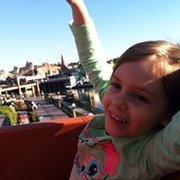Dani C.
Yelp
Staff is super friendly. Very informative. Talked to one lady for at least 45 mins. So much history!!!
Old South Meeting House
"Sanctuary of Freedom"
It was built in 1729 as a Puritan house of worship. As tensions grew with the British colonial government, the Old South Meeting House became the home of free speech in Boston. Members of its congregation included African-American poet Phillis Wheatley who published a book in 1773 while she was enslaved; patriot leaders Samuel Adams and William Otis; William Dawes, who rode with Paul Revere to Lexington in 1775; and the young Benjamin Franklin and his family.
On March 6th, 1770, the day after the Boston Massacre, crowds gathered at the Old South Meeting House to object to the incident where British troops killed 5 citizens after shooting at a protest group.
On December 16th, 1773, during a debate over the British tea tax, around 5,000 people had crowded into the hall to participate. When the debate failed to reach a solution, Samuel Adams shouted secret code words to his fellow Sons of Liberty members: "This meeting can do nothing more to save the country!" He led the crowd to throw 342 chests ($1 million in today's $$$) of tea into the harbour at Griffin's Wharf. This became known as the Boston Tea Party.
In 1775, Dr. Warren arrived to give the annual Boston Massacre oration dressed in a white toga (the attire of a free-born Roman man.) With crowds at the Old South Meeting House overflowing into the streets, British soldiers tried to prevent Warren from entering by blocking the stairs. Warren climbed up a ladder, entered through a back window, and proceeded with his speech. Meanwhile, a British plot to massacre Warren, Hancock, Sam Adams, and others that night failed when the Redcoat who was supposed throw an egg as a signal to draw swords accidentally tripped on his way to the Meeting House and broke the egg. However, the British took revenge against Dr. Warren 3 months later, targeting and killing him during the Battle of Bunker Hill.
During the American Revolution, the Old South Meeting Hall suffered devastating destruction when the British tore down most of the internal parts of the building and used it as a riding school.
The Old South Meeting Hall survived the 1872 Fire of Boston and later escaped demolition. A determined group of "twenty women of Boston" organized to to save the building from the wrecker's ball: they enlisted famous Bostonians, including Ralph Waldo Emerson, Julia Ward Howe, Henry Wadsworth Longfellow, and Louisa May Alcott to help.










































